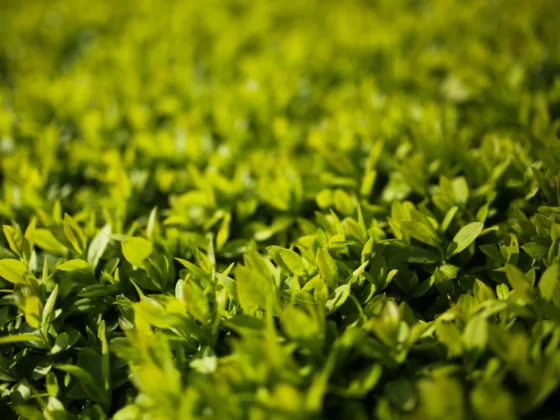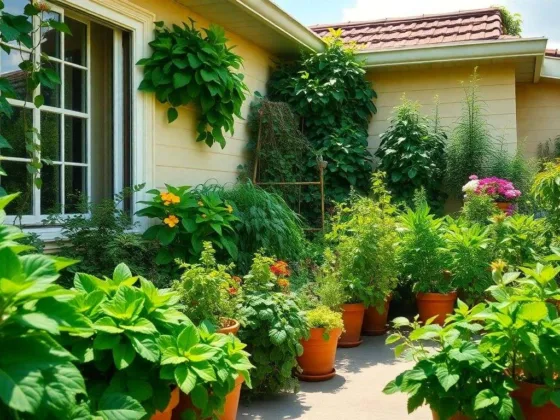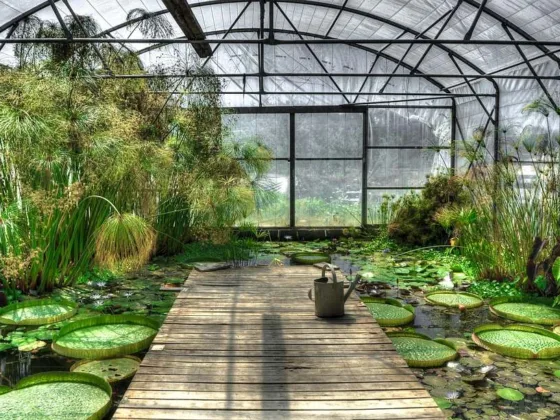Table of Contents Show
There is nothing sadder to look at than a garden full of dead plants.
If you’re new to gardening, you probably have some big ideas and inspiration in mind. But, do you know which steps to take to ensure success?
If the answer is no, this article is for you.

We’ll walk you through 7 top ways to start the perfect garden. Plus, we’ve thrown in a few extra bits of advice, like how to put the finishing touches on your project and when to call for professional help.
Keep reading for tons of helpful gardening tips and tricks to get your project started right away.
New to Gardening? No worries
If you’re thinking about starting a garden for the very first time, stop. You’ll want to read this first!
You should have a detailed plan and materials list prepared before you ever break ground.
And, if you’re feeling really stuck, you should hire a professional in landscape design to help. These experts can help you choose what to plant and where. Plus, they can help you work around existing features, boost your home’s curb appeal, and more.
Read Also:
- We Are Loving Vegetable Gardening, Let’s Start Planting Your First Garden
- Smart Tricks and Tips to Keep Deer Out of Your Yard and Garden Space
- How to Make the Neighbor’s Jealous of Your Lawn
- How to Start a Composting Heap in Your Garden
- 5 Basic Lawn Care and Maintenance Tips
- Garden in Rock Style: Main Peculiarities
- 5 Ways to Maintain Your Garden Healthy
- 5 Tips to Get Rid of Mold on Plants
Weigh the Options
Do you have a vision in mind for your new garden? Before getting started, you’ll need to make a few big decisions.
If you’re planting herbs and vegetables, choose ones that will make regular appearances on your dinner table. Otherwise, all that fresh produce will just go to waste.
And, if you prefer flowers, you’ll want to choose colors and fragrances that you find appealing. Plus, you’ll want to avoid species that can be problematic, think thorns and poisonous blooms, especially if you have kids and pets in the house.
No matter what type of garden you’re planting, you’ll also need to decide whether you prefer to plant annuals or perennials.
Plant in the Right Place
Most plants require at least six to eight hours of full sun each day.
So, before you start digging, pay attention to which parts of your yard get the most sun. And, keep in mind that the sun’s angle won’t be the same all year long.
If you don’t have a whole lot of sunshine on your property, don’t worry. Some species, like ferns, prefer a cool and shaded environment.
You’ll also want to plant on relatively flat terrain if possible. A sloping garden will require more time and work to get started. And, it will be more expensive to upkeep as costly supplies like mulch and topsoil wash away.
Clear the Way
Once you’ve decided what to plant and where to plant it, you’re ready to get started clearing the ground.
If you have grass covering the area where you plan to plant, you’ll need to remove it. For fast results, slice through the grass with a shovel and remove it in sections, taking the topsoil with it.
If you have time to wait, you can also smother grass by covering it with a layer of newspaper or a professional garden liner. This process will take multiple months, but it does yield the best results. Plus, it’s a natural way to fertilize and reinforce your soil.
Give Your Soil a Boost
If your soil isn’t healthy, your plants won’t be either.
Before you start planting, have a soil test performed. It will take a few weeks to get your results, but this information is well worth the wait.
Once you know what your existing dirt lacks, you can add the nutrients that your new garden will need. You may need to apply acidic or alkaline materials to balance the soil’s pH. And, you’ll likely want to use some organic compost to boost nutrient levels.
In some cases, you might even need to introduce friendly bugs like earthworms to help mix and aerate your soil. Plus, their naturally produced castings offer a major nutrient boost.
Don’t forget that working the soil is a vital step. It allows your plants’ roots to grow more easily and helps them access the water and nutrients that they need.
Plant What You Love
You’re finally ready to plant your garden!
Before you get started, you should have a detailed plan or drawing of your layout. This will help you best utilize your outdoor space, stay on budget, and wind up with an impressive result.
Don’t forget to select plants suitable for your climate, soil, and daily levels of sunlight. And, consider what your garden will look like during different seasons, especially if you are planting a lot of annuals that will die back during some months.
If you’re a total newbie, you’ll probably have better results working with young transplants, called set plants. These are heartier than seeds and an affordable “no-fail” option for beginners.
Finishing Touches
Once you’re done planting, you’ll need to address a few final details.
To help keep weeds out and lock moisture in, you can cover any exposed soil with a bit of mulch. This extra top layer will reduce your garden’s watering requirements and prevent weed seeds from germinating.
Plus, it will slowly nourish your soil as it decomposes.
This is also an excellent time to introduce friendly insect species like ladybugs, drop some natural fertilizer or compost, and set up sprinklers or drip lines for watering. Once your plants grow, you’ll find them harder to workaround.
Watering and Upkeep
Now that your garden is planted and growing, you’ll need to start with regular maintenance. Water your plants as necessary to keep the soil around them moist, and pull out weeds before they get big.
Don’t forget that you’ll need to monitor your garden regularly for signs of diseased vegetation and insect invasion. If you find anything out of place, you’ll want to act quickly.
If you enrich your soil before planting, you might not need to add additional fertilizers. But, some plants, especially vegetables, will need a little boost once a month.
Be sure to choose a natural product if you’re fertilizing plants that you intend to eat.
Get Your Garden Started
You’re still new to gardening, but with these tips in mind, you won’t struggle for success.
Remember, it’s a good idea to get help from a professional landscape designer if you’re lacking inspiration or feeling stuck.
Be sure to read through all the steps on how to start a garden before you start digging. Having a detailed plan will pay off when it comes to your outdoor efforts and the survival rate of your new plants.
Looking for more information on home improvement, design, and gardening? Read through our other blog posts and articles for tons of awesome tips, tricks, and project ideas.









